Sinterklaas vs Santa – Eight Humorous Differences
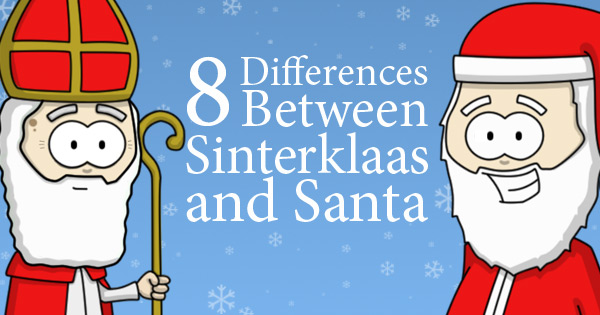
November and December can be a very confusing time of year for expats in The Netherlands, especially for those who have never heard the name Sinterklaas or seen a Zwarte Piet before.
Who is Sinterklaas?
If you were to ask a Dutch Person to describe Sinterklaas they would probably say something along the lines of, “He is a very nice old man who has a long white beard, dresses in red and gives gifts to all the good girls and boys in December.”
Sinterklaas vs Santa
Whatever you do, do not follow this up by asking them how that makes him any different from Santa, not unless you want to seriously damage diplomatic relations between The Netherlands and your own country. They are two very different people. They just happen to work in the same area of business. Here are eight differences that will help you tell them apart.
1) North Pole vs. Spain
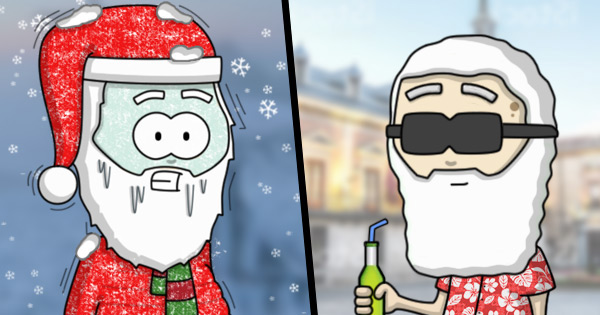
Santa: Lives in freezing cold climate of the North Pole. On Christmas Eve he departs this inhospitable environment, alone, to deliver gifts all around the world without being seen.
Sinterklaas: Lives in Spain for most of the year and (as a result) gets to enjoy more sun and less hypothermia. In the middle of November he temporarily moves his base of operations to the Netherlands to make things easier. His arrival in the country is a huge event known as the Sinterklaas Intocht. A different Dutch city hosts the intocht each year. It is even televised.
2) Fat vs. Thin
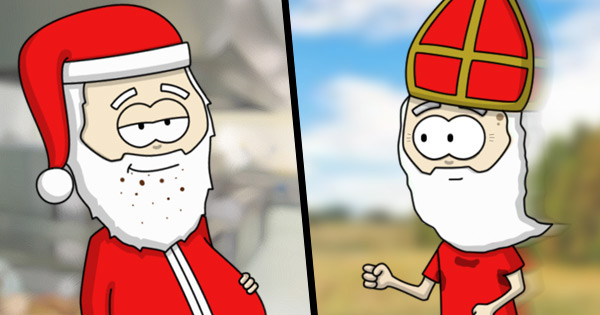
Santa: Has not yet found a diet that works for him and as a result tends to be on the overweight side. His weight should not be a surprise. Millions of children all over the world leave cookies, mince pies, milk and/or wine out for him each year.
Sinterklaas: Manages to remain in good shape for his age.
3) Late December vs. Early December
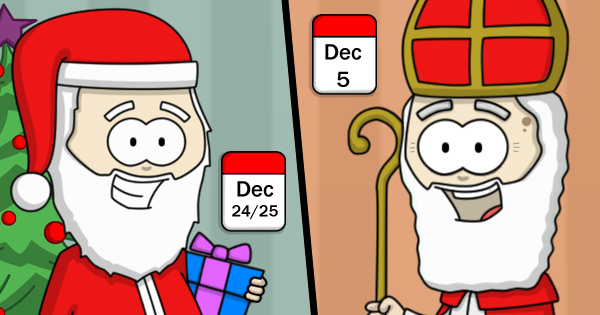
Santa: Delivers gifts under the cover of night on Christmas Eve (December 24th) for children to open the next day on Christmas morning. He has to do this for the whole world in just a few hours.
Sinterklaas: Travels around the Netherlands, delivering gifts, on the 5th of December. The evening this happens is known as Pakjesavond (gift evening). It’s also his birthday. The following day he repeats the process in Belgium and then returns home (to Spain) to enjoy a quiet Christmas.
4) Flying vs. Sailing

Santa: Flies around the world in a sleigh pulled through the night sky by nine magical reindeer.
Sinterklaas: Sails from Spain to The Netherlands in the middle of November on his steamboat, ‘Pakjesboot 12’.
Additional Note: It’s unclear if the preference for flying vs. sailing is because Santa is afraid of sailing or Sinterklaas is afraid of flying. Maybe it has something to do with whatever happened to Pakjesboot 1 to 11.
5) Twelve Reindeer vs. One Horse
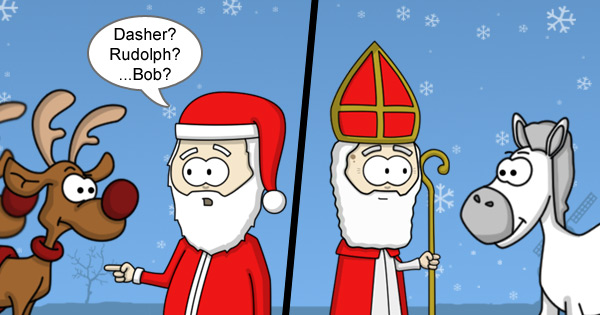
Santa: Has nine overworked magical reindeer who can fly. One of them has a nose that glows.
Sinterklaas: Once he has arrived in the Netherlands he travels around the country on a white horse called Amerigo. As a result, he saves money on animal feed and has to remember less names.
6) List vs. Book

Santa: Keeps the names of the girls and boys who have been naughty or nice on a list (which must be several thousand miles long by now). He used to deal with naughty children by putting a lump of coal in their stocking. However, he has stopped doing that in an attempt to lower his carbon footprint.
Sinterklaas: Keeps everything organized in a book (which never seems to get any bigger despite the growing population). His approach to child behaviour used to be much more zero tolerance. It involved throwing naughty children into a sack, beating them with twigs and dragging them back to Spain. Luckily he realized this was a bit extreme and now takes a much more positive reinforcement approach.
7) Tree vs. Shoe
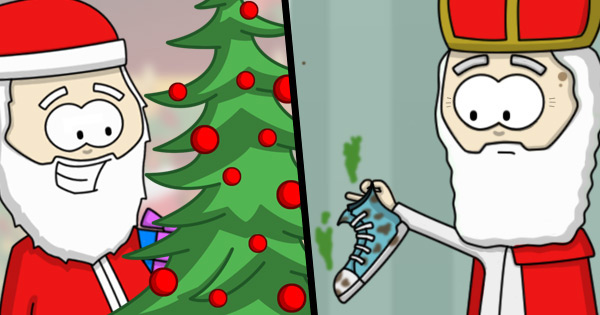
Santa: Places presents for children under the Christmas tree and/or in their stockings on Christmas Eve. This is done secretly and without him being detected.
Sinterklaas: Along with his helpers he already starts delivering gifts before Pakjesavond. They silently leave festive treats, chocolate letters and the occasional small gift known as a schoencadeautje (shoe gift) in children’s shoes. There is often a scattering of Kruidnoten around the scene.
When Pakjesavond arrives they don’t sneak around anymore. They bang on the front door as loudly as they can to announce their arrival. However, when the children open the door Sinterklaas and his helpers are already gone. Only the sack of delivered cadeautjes (gifts) remains.
8) Helpers

Santa: Helps keep fairytale creature unemployment rates down by employing thousands of elves as his helpers. They run his workshop in the North Pole, help keep him organized and get everything ready for his departure on Christmas Eve. However, they rarely get to leave the North Pole or take part in the deliveries themselves.
Sinterklaas: Has a large group of helpers known as Zwarte Pieten. They are incredibly hyper, a little accident-prone and regularly get their shoe polish mixed up with their face cream. Despite their chaotic nature they get to take on a more active role in the festivities than their elf counter-parts. They crew the steamboat, collect the children’s wish lists, deliver most of the gifts and more.
Conclusion – Sinterklaas vs Santa
Santa: Lives in a freezing cold part of the world. Tries to do all the deliveries, by himself, within just a few hours. Struggles to remain unseen in a growing world of surveillance. Is probably quite stressed.
Sinterklaas: Lives in a warm country. Keeps his home life (Spain) and work-life (the Netherlands/Belgium) separate. Has fun with the public attention. Splits his deliveries over two days and delegates most tasks to his helpers. Has a better life/work balance and is probably less stressed as a result.
Bonus Fact – The Truth About Sinterklaas vs Santa
So there you have it, proof that the two jolly gift-givers are two very different people… or are they?
In 1625 the Dutch travelled to the newly discovered continent of America. Once there they founded the small colonial town of New Amsterdam (which would later become known as New York City). Over time a lot of the traditions of the original Dutch founders were forgotten. However, during the American War of Independence, when the Americans wanted to highlight their non-English past, the Dutch tradition of Sinterklaas was brought back and celebrated once more. Some things were changed of course. It’s even suggested that a miss translation or two led to the Sinterklaas’ new name … Santa Claus.
More Info
Want to read more posts about this Dutch tradition? Check out my post on Why I Love Sinterklaas or read about How to Send a Letter to Sinterklaas.



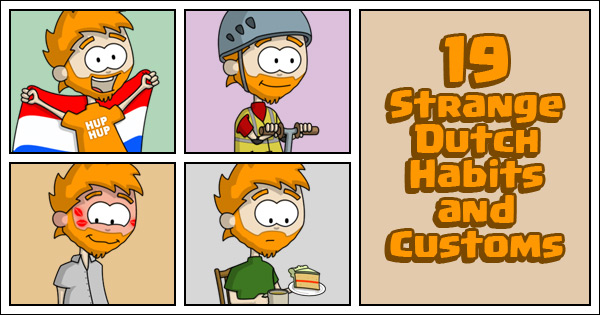

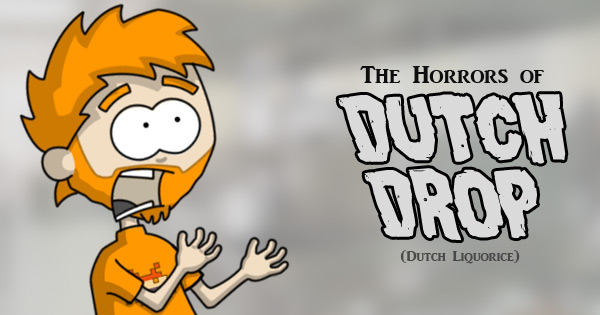

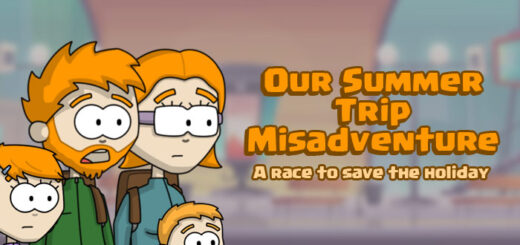
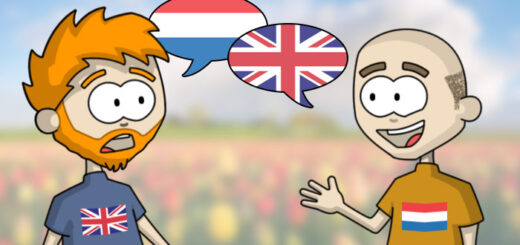

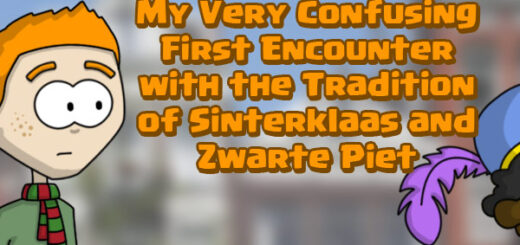
Brilliant! Despite having been here a few years and even participating in pakjesavon our first year, I didn’t realize until this year that the Dutch get a bit prickly if you try to translate Sinterklaas as Santa Claus for your American friends. Oh, the clatter they made! I have learned my lesson and hopefully won’t be stuffed in a bag and beaten with twigs on my way to Spain. ;)
May I make it a little bit more complicated?
In some parts of Flanders, there’s yet another saint that gives presents to the children. Saint Martin visits our homes around 11 November, dressed up like Saint Nicholas, but having only one Zwarte Piet, living in Heaven en riding on a donkey… There are even laws to keep all those saints from fighting each other in the streets: up until 11/11, every saint you see in the streets, is Saint Martin. After that, it’s time for Saint Nicholas, and no Santas are allowed on the streets until after 6 December…
We lived for some time in a region where Saint Martin was celebrated, while my parents lived in traditional Saint Nicholas territory. Our children were used to getting presents almost every weekend from half November right up to New year… :-)
http://en.wikipedia.org/wiki/St._Martin's_Day
In some parts of the Netherlands we celebrate saint Martin’s too (Sint Maarten), but we do it a bit differently: the children go around town with lanterns, sing songs at every door and get candy.
Now, when an expat compares this to Halloween…
Alison – I used to make that mistake for a while as well and it is still funny seeing new expats in the office make the same comment during there first December and hear all the Dutch people around them suck in their breath.
Alcyon – I love the fact that they actually have to have a law to stop saints fighting. That just gives me a brilliant mental image. I’d heard abit about Saint Martin before as well I think. I know Santa is supposed to be based of Sinterklaas but is Saint MArtin as well or visa versa.
Nice list – There is also the Sinterklaasdicht (Sinterklaas poems) tradition that I believe is not there for Santa Claus.
So he brings his horse with him on the steam boat?
No: the horse stays in the Netherlands. Sinterklaas is always very happy to see him, when he lands.
Actually: The horse goes with him to Spain a lot too. The years where we see him on the boat beforehand and those where we don’t see him there rate about 50/50.
Does Sinterklaas get mince pies and sherry and a carrot for the horse like Santa or does he have to wait till he gets home.Or maybe you leave some Tapas out for him.
Children often leave food for the horse, usually carrots, in their shoes when they put them out at night.
Don’t forget to leave a beer for zwarte piet, (aka dad). Or this is ore something from the binnenvaart schippers (inland navigators if i’m correct)
What a riot! Loved em all, but #7 got the loudest laugh! Always wondered what the difference between the two was… guess now I know :) Thanks for this!
Hm. I thought Santa had 8 reindeer and then an extra one with Rudolph. *shrugs*
I will make a note to NOT get the two mixed up! Nor wonder why there is a penury of black shoe polish.
Santa does have eight reindeer well really nine with Rudolph, there’s Dasher and Dancer and Prancer and Vixen, Comet and Cupid and Donner and Blitzen :)
Brilliant! Especially “Whatever you do, do not follow this up by asking them how that makes him any different from Santa, not unless you want to seriously damage diplomatic relations between Holland and your own country”
Orangesplaash – You’re right. I forgot about that while making the list. There is no poem tradition with Santa.
Dragonlady – Amerigo does get carrots left out for him but I’m not sure if anyone leaves anything out for Sinterklaas.
Tiffany – That is one of my faves too
French Bean – You are right. I correct this mistake and fire my researcher right away. Oh wait… I am my researcher… Darn.
Jules – I know this one because I might have damaged Dutch/English relations beyond repair with it :p
Children might leave a bucket with water, carrots, straw, for the horse. And drawings, letters and wishlists for zwarte piet, who brings them to Sinterklaas.
No food or drinks for the visitor. Our zwarte piet used to leave a little note, using our paper and pen. And sometimes he drank something, leaving the glass with some black en red stains.
In Belgium, Sinterklaas gets a beer when the kids put out their shoes. True story.
We May have poems? Not sure But we have Lot’s of Song’s :)
@Alcyon: Flanders is a part of Belgium….has nothing to do with the Netherlands……
Flanders and the Netherlands (and some other bits) were all part of the “Low Countries”. Netherlands split off after the Dutch wars against the Spanish 16th & 17th Centuries (the whole area was the Spanish Netherlands) (and of course Netherlands means Low Countries), Flanders, and Duchy of Liege and other areas remained Spanish Netherlands and then became Austrian Netherlands, now modern Belgium. In reality it is even more complicated.
And (deep breath) Sinterklaas was surely originally Saint Nicholas (Sint Niklaas – or whatever the Dutch spelling is)?
It’s the other way around. Sint Nicolaas got shortened to Sinterklaas by the Dutch. And when they emigrated to America in the 18th century, they took their saints with them. And because the Americans could not pronounce Sinterklaas, they turned it into Santa Claus.
This is my first experience of Sinterklaas in the Netherlands. I work in a Dutch international school and have seen first hand, the diplomatic carnage it can cause
Zero tolerance policy, great stuff!
And I just HAVE to ask…is it really *that bad* to ask what the differences between Santa Claus and Sinterklaas are?
As a foreigner, I would just think it’s an innocent-enough question that is merited by curiousity, not a subject so severe that it would evoke World War III between Holland and the U.S.
Or worse: have Sinterklaas himself horde me off to Spain with my skin sporting twig-like bruises.
:-P
Ian – I know how much of a shock Sinterklaas can be your first time but I can’t imagine what it must be like doing it for the first time surrounded by kids.
Suus – It’s not spam about Viagra so no problem :p
Belle – Thanks :)
French Bean – No but you will be told in no uncertain terms that they are not the same person and that Santa copied Sinterklaas. And I always thought getting dragged to Spain does not sound so bad… they have nice weather there.